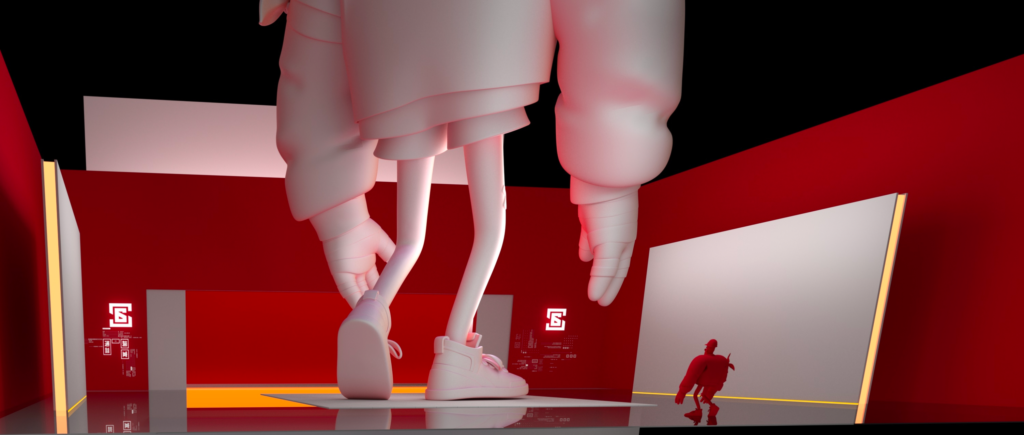Topology plays a very important role in correct deformation of 3D Model and its optimization for render. So, … Read more

It can be scary getting started as a motion designer. What helps is learning the whole process of motion design, so you know what skills you’ll need to build over time.
Here’s where to get started.
The first key to motion design is understanding the foundational principles of traditional animation. They are like the laws of physics, and should be kept in mind while you work.
Of course, you can always break the rules to create something unique and outstanding.
Traditional animation is critically important in the industry and gives you a very artistic approach. If you want to start creating motion right away and you have pretty good drawing skills, you can use software like Photoshop and Animate and jump into frame-by-frame animation.
For example, let’s quickly add some frame-by-frame liquids to our cube and see the result:
Thanks to the technologies and diversity of computer software, animation has become much easier for everyone who wants to start their motion design career without any drawing skills.
Digital animation is when you can make automatic animations without drawing them frame-by-frame. In this way, you can learn much quicker, especially if your drawing skills are poor. Software like After Effects makes animation accessible and available to everyone.
With imagination, we can give a personality to the cube that we moved from A to B. Let’s add eyes, legs, hands, and maybe even a haircut. Now it’s much better.
In 2D animation, Solid Drawing refers to using form, weight, and volume to make it seem like you’ve created a 3D object. It’s an illusion. 3D animation works somewhat similarly, but you instead need to incorporate the rig for a feeling of balance in the character’s pose.
Let’s turn our character a little bit to make the filling of a 3D object in After Effects.
You can see how the perception of this object is changed. This animation moves us to a new stage: rigging and animation.
Digital rigs are the virtual bones and joints that allow models to move. They are similar to the strings used to manipulate a marionette. A good rig should feature the right amount of flexibility, otherwise the animators can’t create the poses they need.
Too much flexibility makes posing the model too time-consuming. Rigging is not always about the limbs. There are plenty of other tasks where you need the rigging systems. It can be a facial rig.
It can be automatic rolling by just moving the cursor.
It can be a builder of the character which is very popular in generative 5000 NFT collections.
So back to the walking cycles for the cube character, we’ve prepared a rig set up to make the animation process much easier. When it comes to character animation, it’s always a pain to make it without rigging. There are many tools on the Internet, but we’ve prepared our own motion tools pro that you can use for free. It includes rigging options and even automatic walk cycles.
If you want to learn how to use different scripts developed by our team, we invite you to attend our free webinar series where Yaroslav Kononov, the founder of Motion design School, demonstrates the workings of the tools using them in practical examples.
Usually, you need to have some coding skills to make a good rig. We call them expressions, and it’s a mix of Javascript and After Effects. Take a look at this example where our character walks automatically just by moving the cursor:
That’s why we recommend you to use our tool that does everything automatically for you.
When talking about motion design, we can divide it into design, rigging, and animation. These are the main skills that you should practice to become a professional motion designer.
Besides that, we have many other areas which can describe the variation of motion design.
We can play with real footage, text, and VFX. If we jump to the video industry, there are another set of skills like compositing tracking and rotoscoping.
What if you need to make a real 3D? After Effects still can help us with that, but it has a lot of limitations. And we have a special 3D software like Blender. And as you may know, it’s completely free. The main advantage is that you can play with dimensions, shading, lighting, and textures which gives you another level of creativity. In the example below, we change the lighting setups one by one, and you can see how it influences the perception.
So let’s sum up a little bit.
Big production studios use industry-standard software, such as:
Regardless, 3D worlds open a huge amount of professional opportunities for artists. And it starts with *getting* the motion design process. Let’s divide our cube into all processes:
Modeling, rigging, animation, shading/texturing/lighting, VFX, and Render can be done in Blender, which is where we recommend you get started.